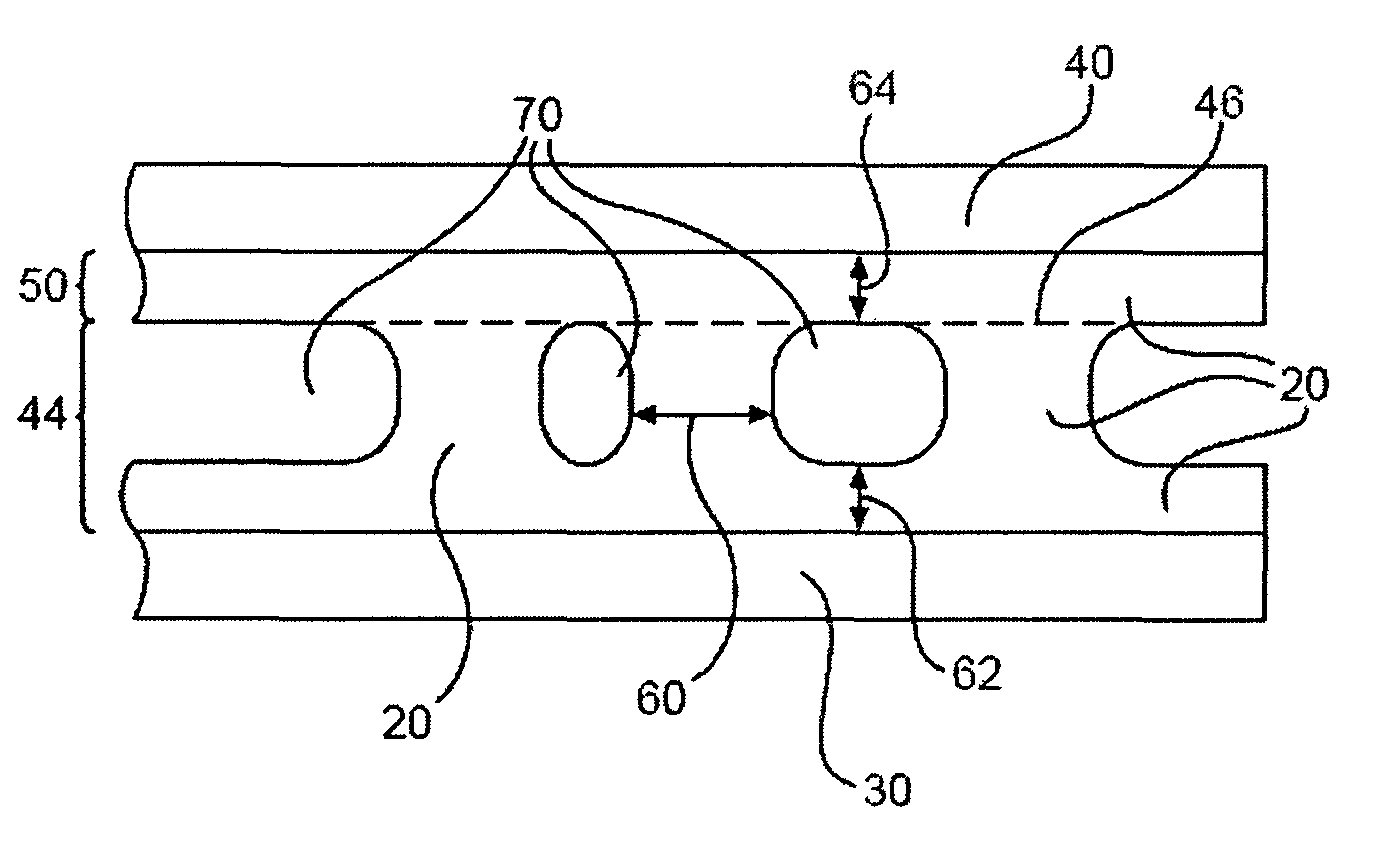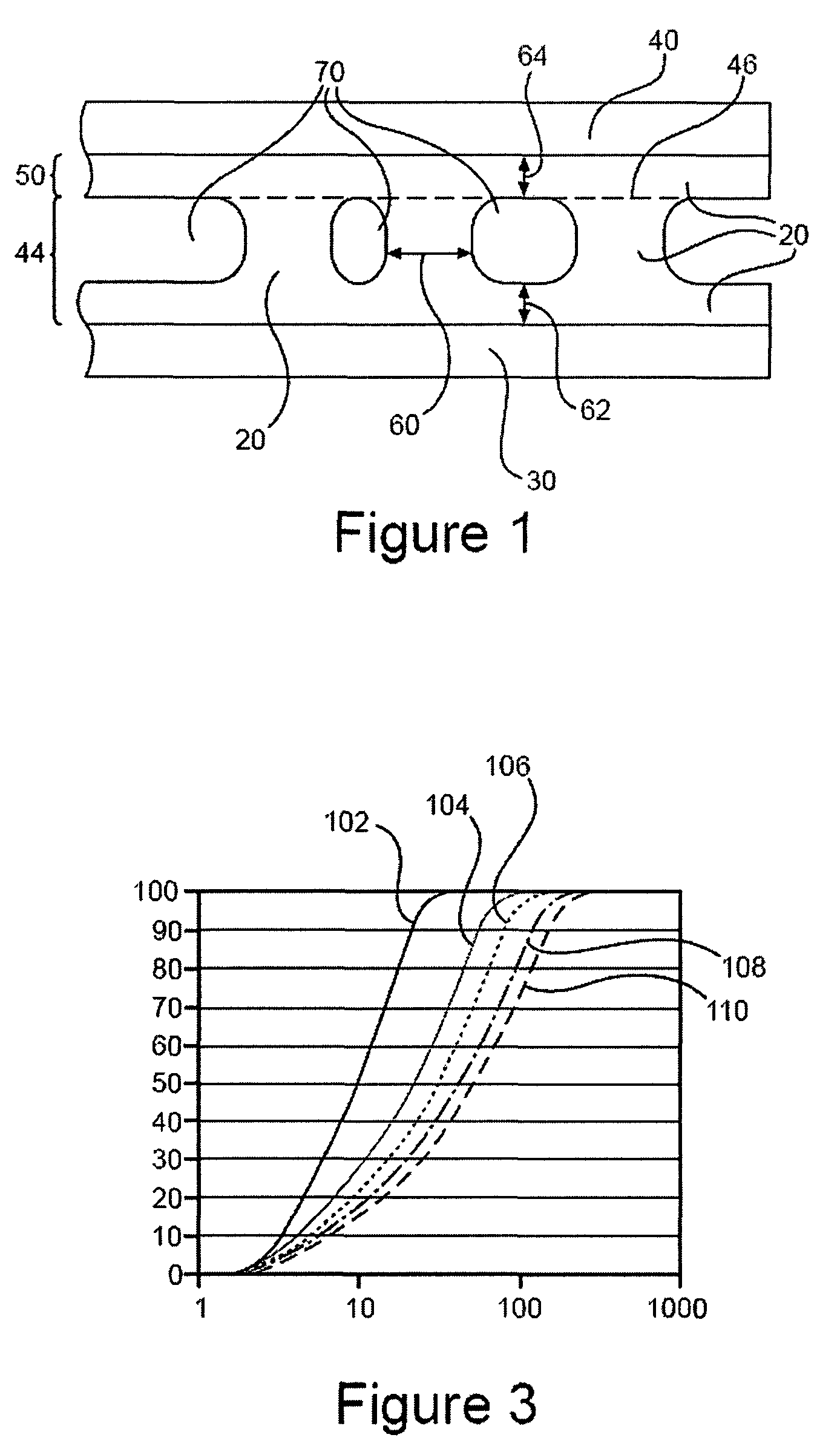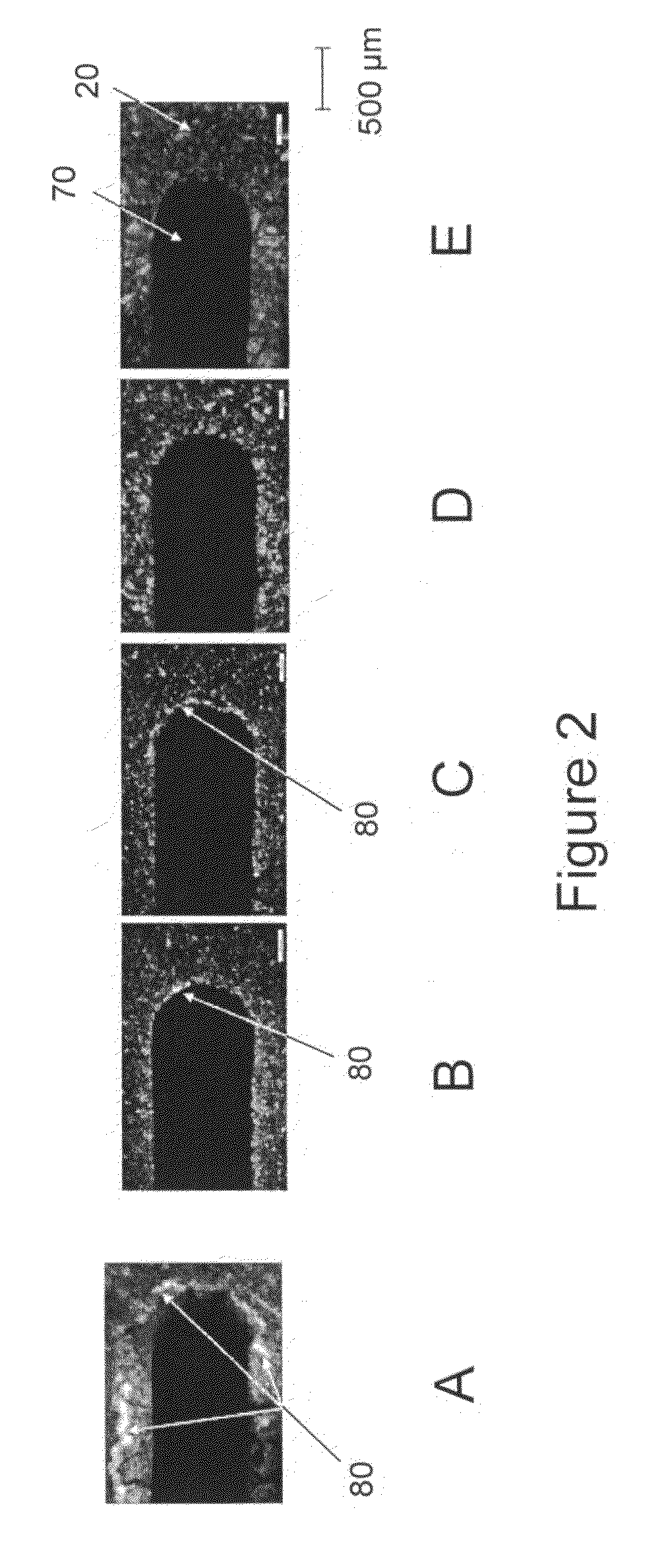Sintered glass and glass-ceramic structures and methods for producing
a technology of glass-ceramic and sintering glass, which is applied in the direction of glass reforming apparatus, microstructural devices, printing, etc., can solve the problems of weak spots and potential breakage points in the final fully sintered product, and achieve the effect of more robust structure and easy manufacturing
- Summary
- Abstract
- Description
- Claims
- Application Information
AI Technical Summary
Benefits of technology
Problems solved by technology
Method used
Image
Examples
Embodiment Construction
[0017]Microfluidic devices, such as device 10 of FIG. 1, may be comprised of a three-dimensional (3-D) sintered frit structure 20 that is sintered and thereby fused between two substrates 30 and 40 so as to define a monolithic device 10 with fluidic passages 70 therein. In some devices or portions of devices, as in the device 10 represented in FIG. 1, one layer 44 of 3-D frit structure is formed, desirably by molding, on a substrate, then sintered to another substrate having only a thin flat layer of frit 50, resulting in a fused joint within the 3-D frit structure 20, indicated by the dashed line 46. Alternatively, on other devices or portions of devices, two 3-D frit structures first formed on separate substrates may be sintered to each other.
[0018]In either case, the resulting patterned sintered frit structure 20 has a characteristic minimum feature size or dimension 60 in the direction parallel to the substrates 30, 40. Dimension 60 corresponds to the characteristic minimum dist...
PUM
| Property | Measurement | Unit |
|---|---|---|
| particle size | aaaaa | aaaaa |
| width | aaaaa | aaaaa |
| width | aaaaa | aaaaa |
Abstract
Description
Claims
Application Information
 Login to View More
Login to View More - R&D
- Intellectual Property
- Life Sciences
- Materials
- Tech Scout
- Unparalleled Data Quality
- Higher Quality Content
- 60% Fewer Hallucinations
Browse by: Latest US Patents, China's latest patents, Technical Efficacy Thesaurus, Application Domain, Technology Topic, Popular Technical Reports.
© 2025 PatSnap. All rights reserved.Legal|Privacy policy|Modern Slavery Act Transparency Statement|Sitemap|About US| Contact US: help@patsnap.com



